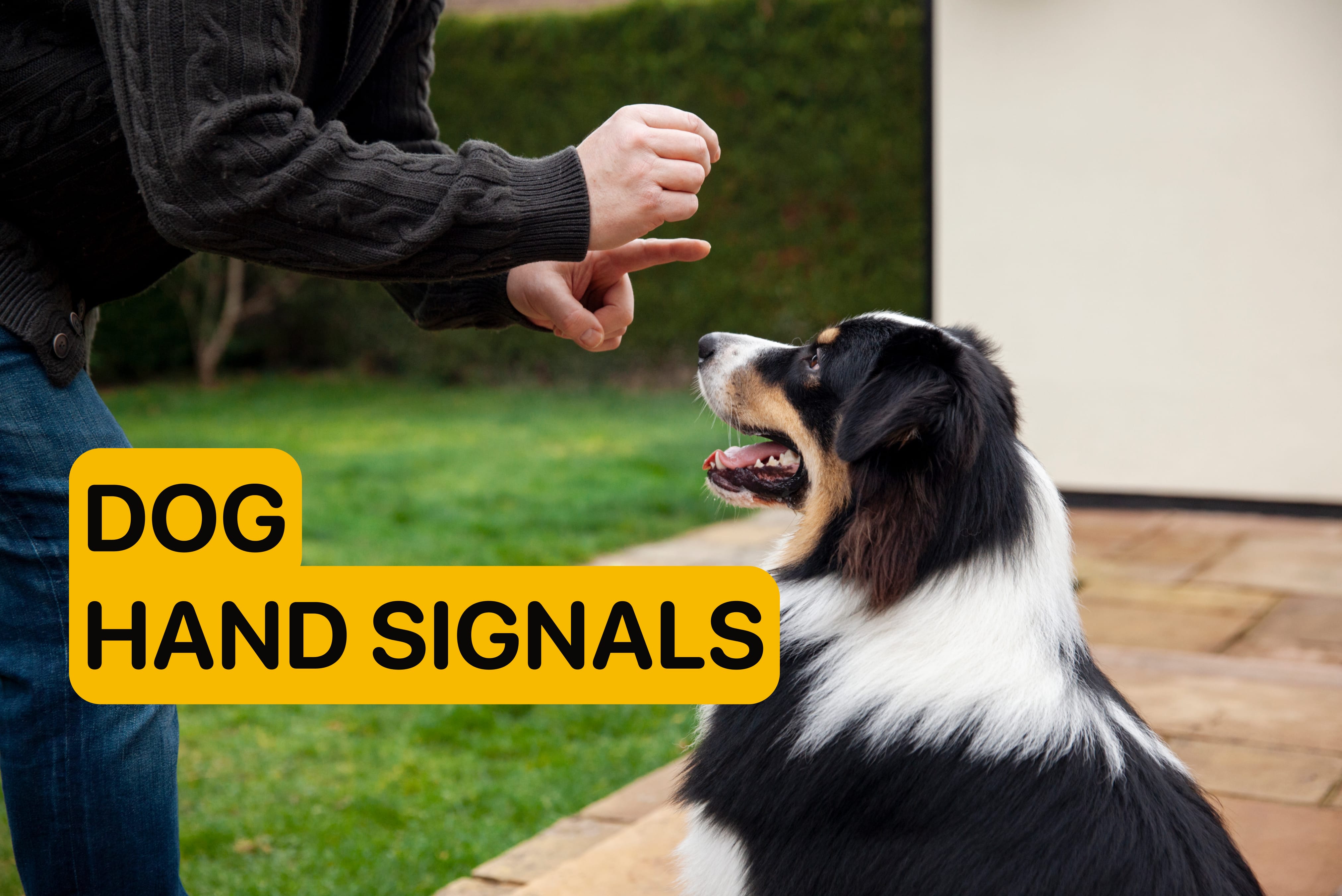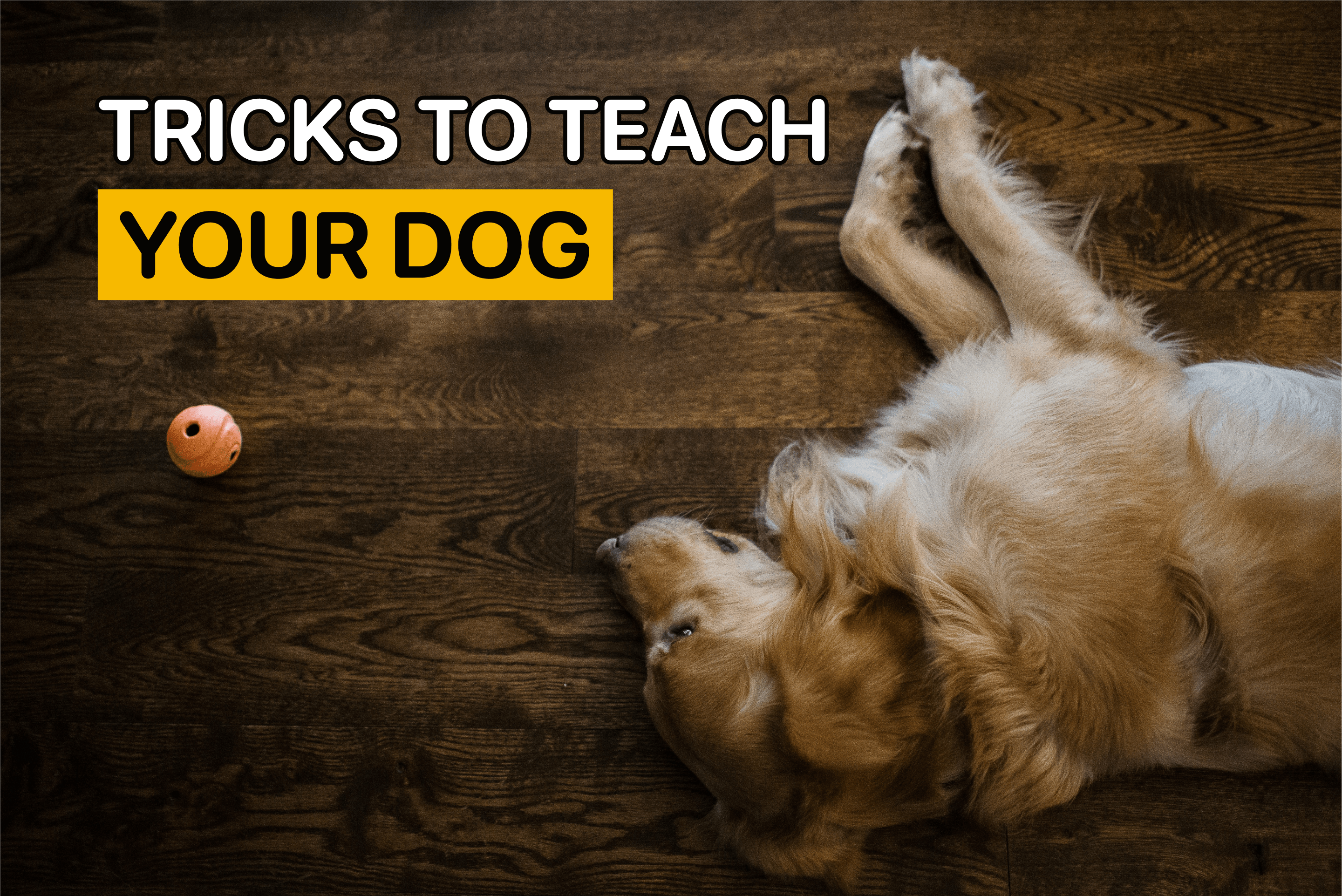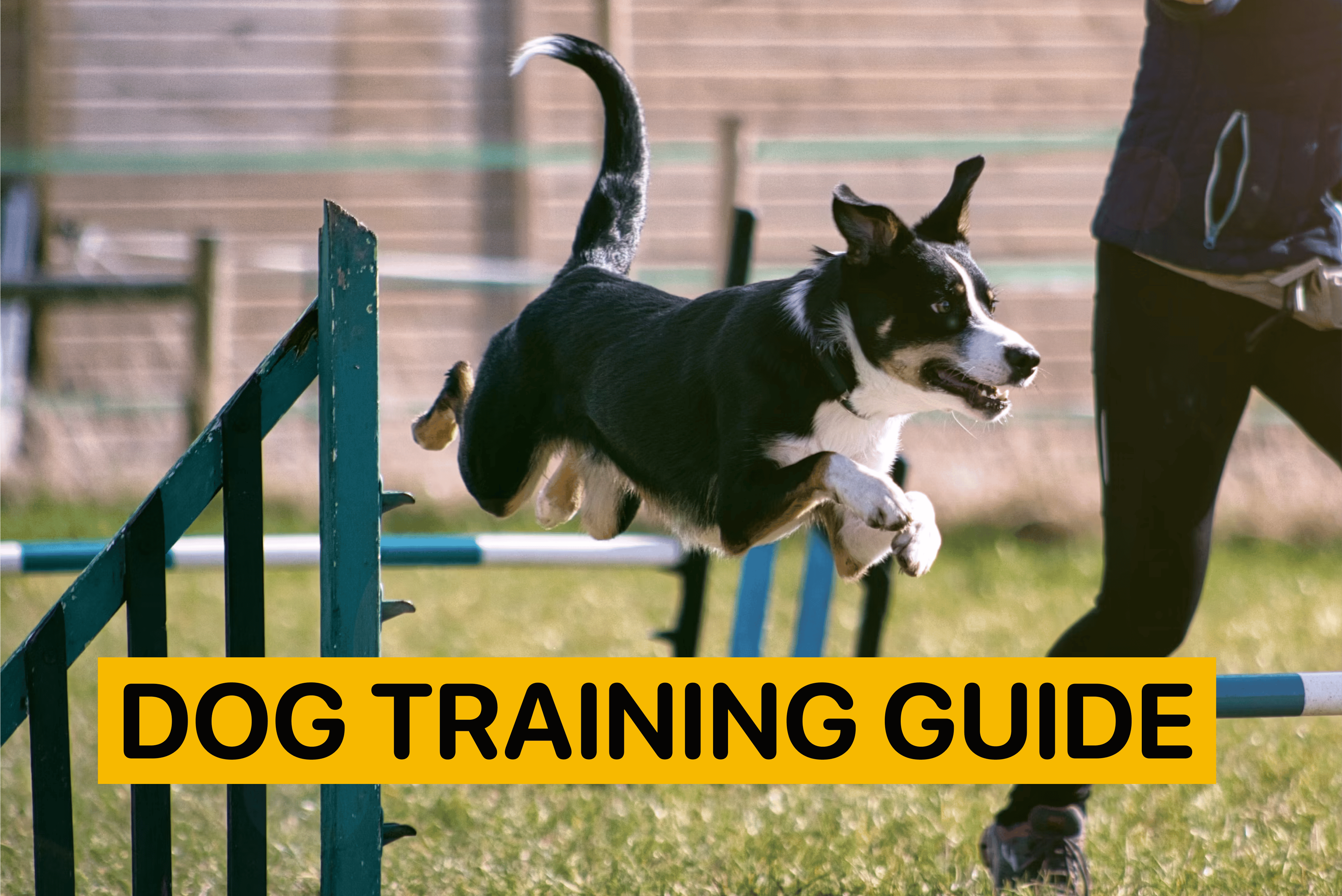How to Raise a Well-Trained Dog: 7 Essential Dog Commands

By
Woofz Team Updated on |Reviewed by Frederica Caneiro
Training a dog can be challenging. It requires learning about the best training techniques, investing time and energy into consistent practice, and staying patient even if your dog disobeys. But the result is worth the effort. Introducing your dog to basic obedience training simplifies your day-to-day interactions, ensures more effective communication, and keeps the dog safe.
If having a well-trained dog is something you envision, start teaching your canine commands as soon as possible. We’ve collected the top pick of basic commands to teach your dog. Read on to learn more.
Sit
The “Sit” command is one of the first dog obedience commands owners choose to teach. The reason for this is simple: the command is a life-saving tool in various situations. From preventing your dog from jumping on people to keeping them away from heat surfaces or controlling their behavior during vet check-ups, following the “Sit” cue is an effective way to modify your dog’s reaction in a new environment.

To teach your dog to sit on command:
- With a treat close to the dog’s nose, move your hand up and behind the dog’s head so that they follow it.
- Your dog’s bottom will eventually go down, and they will sit.
- Praise and reward going into the sitting position.
Come (Reliable Recall)
Teaching your dog to come when called is fundamental for their safety. It’s also beneficial when you walk the dog outdoors and off-leash. Once the dog has mastered the command, they should react to their name and return to you even in a busy place full of distractions.
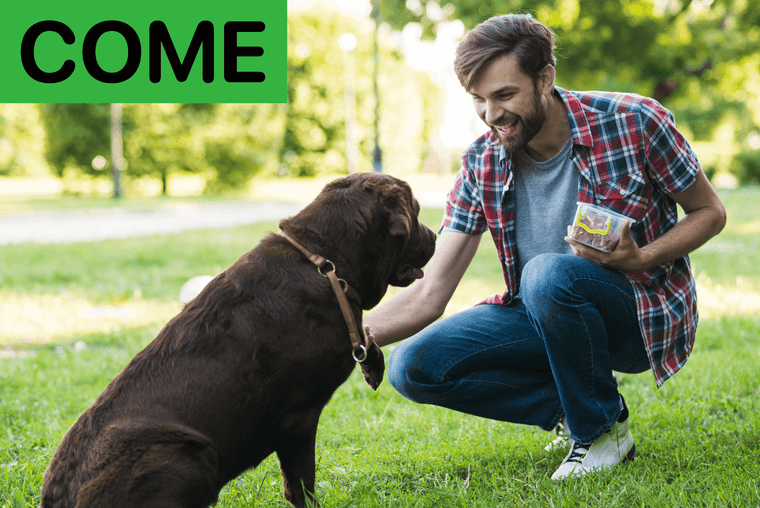
To teach your dog to come:
- Start training in a quiet place where the dog can better focus on you.
- Call the dog by their name and add, “Come!��” (encourage the dog to move closer by keeping a treat in your hand).
- Reward the dog when they react to your command.
- Add distance and practice in locations where more distractions are present.
Down
Another cue that belongs to essential dog commands is “Down.” This encourages a dog to lie down and remain calm in different environments. Like the “Sit”, "Down" command, can be practical in public places, such as a vet’s office or a restaurant, where your dog’s anxiety can spiral out of control.

Teaching your dog to lie down on command:
- With the dog in a sitting position, keep a treat close to the dog’s nose and gradually move it down, encouraging your dog to follow it.
- When your dog is in a horizontal position, say “Down” firmly.
- Praise and reward your dog each time they follow the treat.
- Keep practicing until the dog reacts to your verbal cue without a lure.
Struggling with dog training?
You’re not alone! Woofz’s Intense Training Program is here to help you teach essential commands quickly and effectively.
Start today!
Stay
“Stay” is also one of the standard dog commands taught in obedience training. It’s crucial for a dog’s safety because it implies keeping the dog in one place when there are distractions or potential dangers. You can use it to control your pet during walks, crossing the street, or when you can’t monitor them in a busy environment.
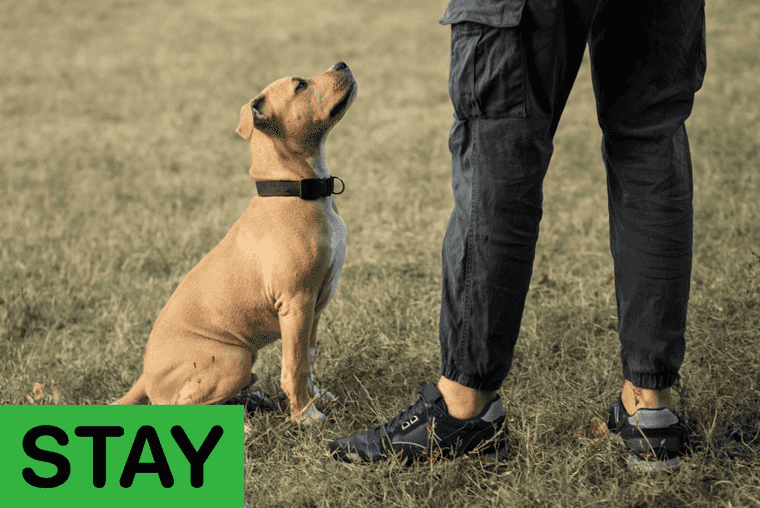
To teach your dog to stay:
- With your dog sitting, hold your hand to show the stop gesture and say, “Stay.”
- Do the hand signal and reward them if they don’t move.
- Do the hand signal, take one step back, and reward them if they don’t move.
- Add more distance gradually if the dog is having success. Decrease the distance if they fail.
- Add the vocal cue “Stay.”
- Add distractions and train in different environments.
- Start going back and keep focused on your dog.
- If the dog remains in the sitting position, praise and reward them.
Leave It
Teaching your dog to “Leave It” means they should ignore objects that are potential hazards. It is one of the vital dog training commands since dogs are natural sniffers who enjoy roaming freely and can pick up poisonous food during their walks.

To teach the “Leave It” command to your dog:
- Choose an object your dog is motivated to play with (such as their favorite toy). Start with a less valuable toy, and train with their favorite toy/food once the dog already knows the vocal cue.
- Allow to sniff and paw it while you keep it in your hands.
- Firmly say, “Leave It” and wait until your dog stops touching it.
- Praise and reward this behavior.
- Keep practicing the command daily, introducing your dog to other objects.
Drop It
Similarly to “Leave It,” “Drop It” is another safety dog command to teach. It implies releasing an object from the dog’s mouth on your command. This command helps prevent the dog from chewing on your possessions and keeps the dog safe from dangerous substances.

To teach your dog to drop items on command:
- Allow your dog to pick up an object like a toy in their mouth.
- Say “Drop It” and exchange the object for a treat.
- Praise and reward your dog when they release the objects on your command.
- Practice regularly using different items to help your dog build the association between the command and the behavior.
Place (Bed)
The command “Place” or “Bed” is helpful when removing a dog from a specific environment. For example, your dog may habitually jump on people or get overly enthusiastic about visitors. If this is the case, you can use the command “Place” to keep your dog away from other visitors, which will calm and ensure safe interaction with them.

To teach your dog the command “Place:”
- Stand close to your dog’s placemat while holding a treat.
- Say “Place” and lure the dog to their bed. Add the vocal cue after training by luring with treats.
- Gradually remove the lure and point to place with your finger instead.
- Reward following your directions.
- Increase your dog's time on their bed and practice the command using different locations.
Why Do I Fail to Teach My Dog Commands?
Some dog parents struggle to make considerable progress in dog training. Ineffective training sessions are frustrating and may decrease your motivation to teach your dog obedience commands. We’ve picked some reasons you might experience problems training your dog.

Poor bond with the dog
A dog is likelier to follow your direction if they value your company. This is only possible when you spend quality time together playing and having fun. It’s also essential to avoid punishment and use positive reinforcement methods only.
Wrong training techniques
Patience, consistency, and proper training procedures are the cornerstones of successful dog training. Dedicate time to learning each step of the command you will teach. Be ready to go back if needed, and allow your dog to figure out the idea behind the command you train.
Distractions in the training environment
Dogs are famous for their high level of energy and natural curiosity – no wonder they get easily carried away by smells, noises, and visual stimuli. Training basic dog commands requires your dog to focus on you over a prolonged time. So, choose a proper training spot that is quiet and distraction-free.
Wrap Up
Teaching your dog commands effectively controls their behavior, improves your daily interactions, and ensures the dog’s safety. You can start by introducing your dog to essential commands and gradually increasing their complexity to provide mental and physical stimulation. Research the training steps thoroughly, choose a proper location, and cherish your bond with your dog to achieve excellent training results.
